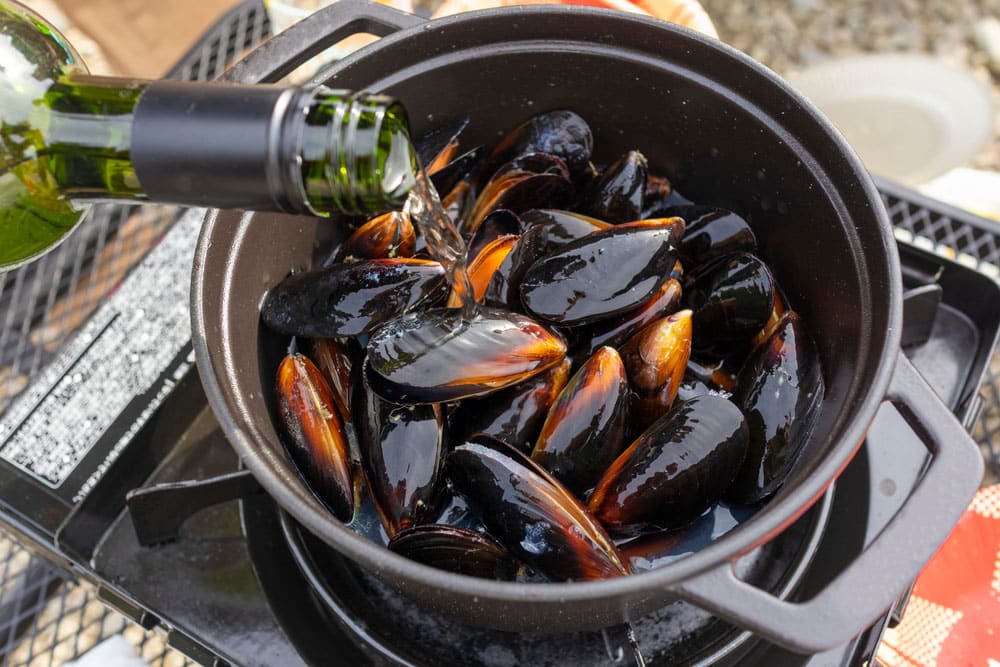
Mussels are a delicious bivalve treat that is so much more flavorsome than scallops or clams (in our opinion anyway). Many restaurants serve them in a creamy white wine or garlic sauce, in a paella or a pasta dish. They’re easy to cook at home yourself too.
However, some people find mussels a little off-putting because of the black sack on the edge of the meaty part. They ask “Is it the brains? Is it poop? Is it the stomach or reproductive organs? Or are my mussels off and needing to be thrown away?”
We’re here to tell you what that is and how to deal with it so do keep reading.
Black Stuff In Mussels
Where does that black stuff come from?
Mussels feed on microscopic sea creatures called plankton. The black stuff is this food that was still in the creature’s digestive tract when it was harvested. That is, the undigested remnants of plankton. Therefore, it is technically not poop and it is edible.
Should I remove it?
You may have heard about removing the “poop shoot” or dark “vein” from shrimps and prawns. That is not the same thing.
It’s not really possible or practical to remove the black section from every single mussel before you eat it. It is not harmful and doesn’t give a strange taste to the meal.
While the idea of eating undigested plankton may seem unappetizing to some people, think of it as a “side dish” to the main meal! Please go ahead and enjoy your mussel dinner – black sack and all.
How do I know if my mussels are fresh?
Now that you know that the black sack does not mean your mussels have gone bad, how do you know if mussels are bad? If you’re buying them fresh from the seafood counter or a fisherman, this is easy.
The mussels should have been kept on ice and the shells should be wet and shiny. They should smell like the ocean – fresh and salty. If they smell fishy, they are not fresh.
Any that don’t close after you have tapped them against the counter are dead and should be thrown out. Also, discard any with broken shells.
Fresh mussels should be cooked on the day of purchase or stored in the refrigerator and cooked within a day or two.
It’s a little more difficult to tell if frozen mussels are off. Check the sell-by date on the packaging. The packaging should not have any ice crystals or frost on it as this indicates that the package has defrosted and been refrozen.
Once you are ready to cook them, if you open the package and the mussels smell foul or fishy, they are not fresh and should (sadly) be discarded.
To Conclude
Many people seem to be confused about whether or not they should be eating the black stuff in mussels. We hope we have set your mind at ease about this now.
The black stuff is only the undigested microorganisms that the mussel ate that have yet to turn into waste. Provided the mussels are fresh, you won’t get sick from eating the black stuff. Most diners simply eat the whole thing.
If you’re eating a lot of mussels, then it is just not viable to use a fork to try and remove the black stuff from every shell. So, just save your time and eat the meat with the black stuff. It won’t impact the flavor of your dish and is all part of the seafood dining experience.


Thanks; if I have a bouillabaisse and they’re in them, I’ll eat them. If I’m fixing a bouillabaisse, I’ll stick to the clams and scallops, thank you. I do prefer the milder flavor of clams and scallops, together with lobster, crab, one soft fish and one firm fish. But that’s the only way I ever eat mussels, if at all.